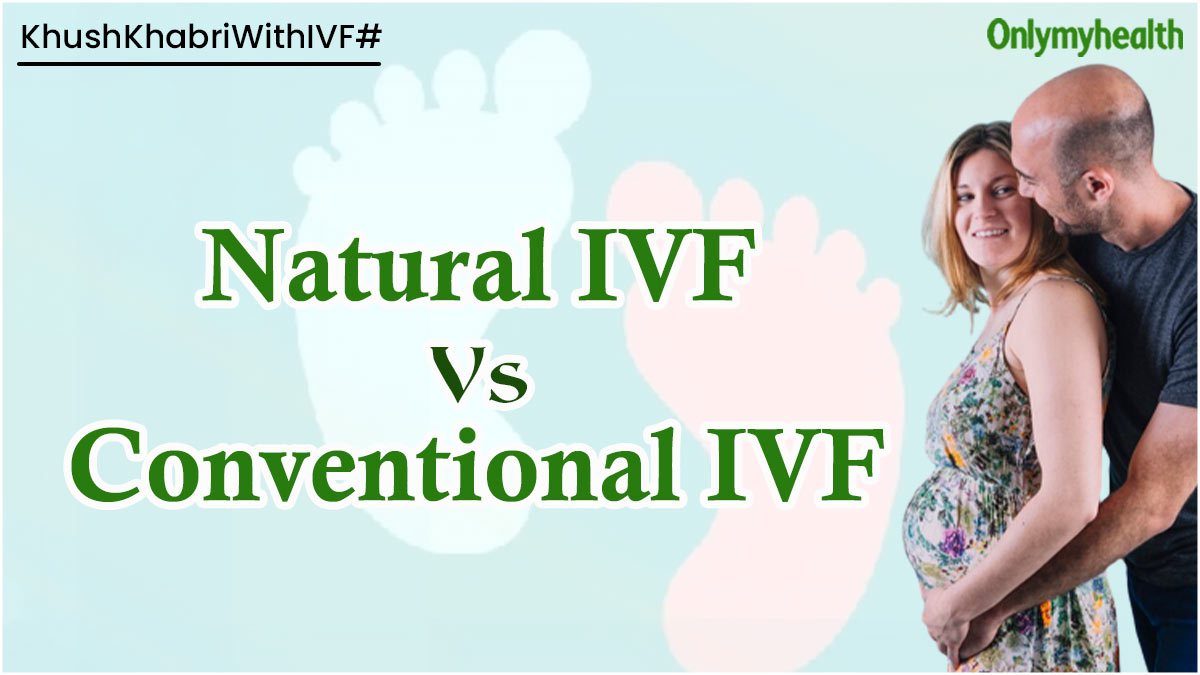
#KhushKhabriWithIVF: In the realm of assisted reproductive technology, in vitro fertilisation (IVF) has become a widely used method for couples struggling with infertility. Over the years, different approaches to IVF have emerged, including natural IVF and conventional IVF. Understanding the differences between these two methods is crucial for individuals undergoing fertility treatments. Under our Khush Khabri With IVF campaign that aims at uncovering all the aspects of IVF, this article aims to provide the key differences between natural IVF and conventional IVF. It includes highlighting their variances in terms of protocol, success rates, and potential benefits and drawbacks to help individuals make informed decisions regarding their fertility journey. Let us understand all about the differences from Dr Nisha Bhatnagar, Medical Director & Sr. IVF Consultant at Aveya Fertility Clinic.
Table of Content:-
1. Medication Usage
Natural IVF: Natural IVF, also known as minimal stimulation IVF, focuses on using a woman's natural menstrual cycle without the use of fertility drugs to stimulate egg production. This method aims to retrieve the one egg that is naturally produced during a woman's cycle.
Dr Bhatnagar explains, ‘It involves monitoring the growth of the follicle, and when it reaches an optimal size, the egg is retrieved through a minor surgical procedure. Once retrieved, the egg is fertilised with sperm in a laboratory, and the resulting embryo is transferred back into the woman's uterus. This approach reduces the use of medications, making it a milder option for some.”
Conventional IVF: Conventional IVF, on the other hand, involves the administration of fertility drugs to stimulate multiple eggs to develop within the ovaries. Dr Bhatnagar shares these drugs help to increase the number of eggs available for retrieval during the cycle. The eggs are then collected through a similar surgical procedure as in natural IVF. After retrieval, the eggs are fertilised with sperm in the laboratory, and the resulting embryos are carefully monitored for quality and development. The healthiest embryos are selected for transfer into the woman's uterus. This method is more aggressive in terms of medication use.
Also Read: A Miraculous Journey As Couple Celebrates Triumph over Unexplained Infertility Through IVF

2. Protocol
Talking about the protocol for natural IVF, Dr Bhatnagar shares that it is simpler compared to conventional IVF. With natural IVF, there is no need for extensive drug administration or hormone injections. The process of retrieving eggs in natural IVF it's more akin to giving a blood sample. Follicular fluid is aspirated with a needle, emphasising the minimally invasive nature of this approach. This can be appealing to individuals who wish to avoid the potential side effects and discomfort associated with fertility drugs.
In conventional IVF, the protocol involves a series of hormone injections to stimulate the ovaries and promote the growth of multiple follicles. This may require more monitoring and a longer treatment duration.
3. Success Rates
“Both natural IVF and conventional IVF have similar cumulative pregnancy rates, but the natural cycle success rate per embryo transfer cycle is high. This means that while the cumulative success rates may be comparable, natural IVF often results in a successful pregnancy with fewer embryo transfer cycles. However, it is important to note that success rates can vary depending on individual factors such as age, underlying fertility issues, and the quality of embryos transferred. Natural IVF is often recommended for women with specific medical conditions or those who wish to avoid excessive hormone use,” highlights Dr Bhatnagar.
Also Read: Different Technologies That Boost Chances Of A Successful Fertility Treatment

4. Higher Chances of Euploidy
Natural IVF may have higher chances of euploidy, as nature selects the best egg from the cohort of follicles, potentially leading to healthier embryos and higher success rates.
5. Cost
As per Dr Bhatnagar, natural IVF may be more cost-effective than Conventional IVF due to fewer medications and monitoring required. The use of more medications and monitoring can make Conventional IVF more expensive.
Also Read: Why IVF Is Expensive And What Factors Contribute To Its Costing
6. Benefits and Drawbacks
Natural IVF offers a more gentle and less invasive approach to fertility treatment. It may be suitable for individuals who are unable or unwilling to undergo extensive drug administration. Additionally, it eliminates the risk of ovarian hyperstimulation syndrome (OHSS), a potential complication associated with conventional IVF, especially when high doses of hormones are used. However, the limited number of available eggs in natural IVF may reduce the chances of success for some individuals.
Conventional IVF, with its higher success rates, can be a preferred choice for couples who have previously experienced unsuccessful natural IVF cycles or those with more severe infertility issues. However, the use of fertility drugs and the potential side effects may be a concern for some individuals.
Dr Bhatnagar summarises, “Natural IVF is particularly beneficial for patients with low ovarian reserve because even with high doses of medication in conventional IVF, they may produce the same limited number of eggs (1 or 2). Therefore, natural IVF can be a more suitable option for these individuals.”
Choosing between Natural IVF and Conventional IVF depends on individual circumstances and preferences. While natural IVF offers a more gentle and drug-free approach, conventional IVF provides higher success rates due to the availability of multiple eggs but involves more intense hormonal stimulation. Individuals and couples need to consult with fertility specialists to understand their unique circumstances and make an informed decision about which method is most suitable for them.
Also watch this video
How we keep this article up to date:
We work with experts and keep a close eye on the latest in health and wellness. Whenever there is a new research or helpful information, we update our articles with accurate and useful advice.
Current Version
